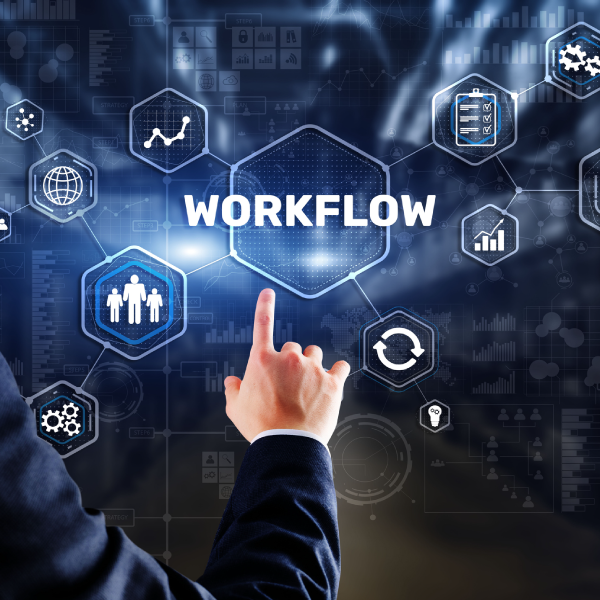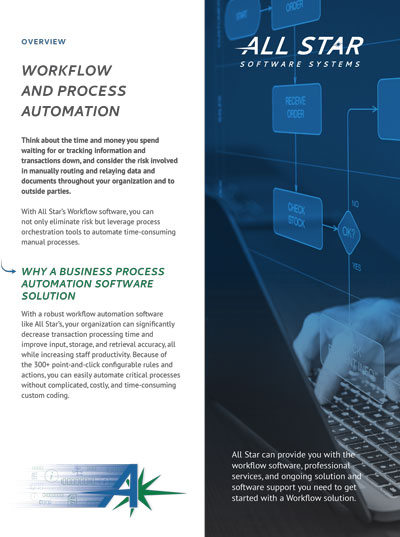
Workflow
With All Star’s Workflow software, you can not only eliminate risk but leverage process orchestration tools to automate time-consuming manual processes.
Eliminate risk and automate time-consuming manual processes
Workflow
With a robust workflow automation software like All Star’s, your organization can significantly decrease transaction processing time and improve input, storage, and retrieval accuracy, all while increasing staff productivity. Because of the 300+ point-and-click configurable rules and actions, you can easily automate critical processes without complicated, costly, and time-consuming custom coding.
Call Us: 888-791-9301
Easily automate critical processes
300+ point-and-click configurable rules and actions
Features & Benefits
- Facilitate transaction production
- Optimize business processes
- Promote accountability with an auditable history log
- Reduce the need for various processes and risk
- Improve customer service
- Lower costs
- Provide flexible integration options across multiple interfaces
- Dynamic Approval Processes
- Electronic Forms
- Business Activity Monitoring and Dashboards
- Automated Notifications
- History
Quickly automate
Workflow solution from All Star
All Star’s workflow solution offers a point-and-click configurable tool that allows you to quickly automate your business processes without the need for custom coding. Once a document or transaction is received, a process is triggered that then accelerates the business cycle, automatically sending the documents to the right employees and ultimately eliminating around 90% of the total processing time. Employees are then notified of any pending tasks, forcing them to prioritize these transactions. This easy to use interface is available to users through the web, ERP, mobile, dashboards, and more, so they can use it wherever they feel the most comfortable. Mobilizing a workflow is as simple as checking a box in the configuration of that workflow.
All Star can provide you with the workflow software, professional services, and ongoing solution and software support you need to get started with a Workflow solution. Contact us or schedule a demo to see how our workflow software can help your business today.








